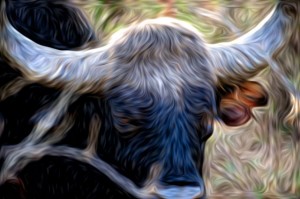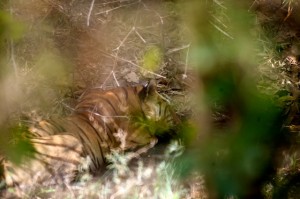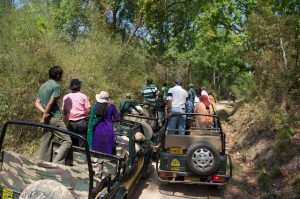 This atmospheric quote is from the redoubtable Captain Forsyth again and The Highlands of Central India who in full Victorian flow dismisses the local name for Bos Gaurus (Gaur) and insists on calling it the Indian Bison. Forsyth’s tone is admiring of what he calls
This atmospheric quote is from the redoubtable Captain Forsyth again and The Highlands of Central India who in full Victorian flow dismisses the local name for Bos Gaurus (Gaur) and insists on calling it the Indian Bison. Forsyth’s tone is admiring of what he calls
This unconquerable antipathy of the Indian bison to the
propinquity of man (which) is slowly but surely contracting its range,
and probably diminishing its numbers. Gradually cultivation
is extending into the valleys that everywhere penetrate these
hills ; and the grazing of cattle, which extends far ahead of
the regularly settled tracts, is pushing the wild bull before it
into the remotest depths of the hills.
With a characteristic absence of irony he goes on to state at the end of this chapter (largely concerned with hunting) that ; On the whole I think
stalking the mountain bull among the splendid scenery of
these elevated regions, possesses more of the elements of true
sport than almost any other pursuit in this part of India.
Forsyth dismisses several accounts of the ferocity of the Bison as the work of ‘the class of writers who aim rather at sensationalist description rather than sober truth‘ and adds that he found the bison extremely timid. That’s easy enough to believe when you watch them placidly grazing in the bamboo, but they are huge beasts. They are the largest wild cattle in the world as an adult male can weigh up to a tonne (1000kg). Bafati, my guide, here at Kanha, has had to retrieve the body of a local trampled by a male and has himself been charged whilst in his jeep by a male during the rut. Schaller describes them as noticeably shy and was ‘rarely able to watch them undisturbed’. He also observes that they are the only wild ungulate formidable enough to stand its ground against a tiger. Anecdotal evidence from the guides here suggest that tigers do predate Gaur but only via ambush, which is of course what the tiger evolved to do. In fact the tigers niche as an ambush predator explains why they are so difficult to see, and has been linked to its generally solitary lifestyle, although there has been some intriguing evidence to suggest that they are less solitary than had been assumed.
On the way out of the park today we came across a huge traffic jam at a nala (stream) where a tiger was dozing in the shade. This was the scene as all of the gypsies tried to get a view of stripes.
This is what they saw, a relatively poor view through thick cover, but a definite tiger sighting 
Home to wrestle with the complex taxonomy of the woodpeckers of which more later as I still have the aching head.

